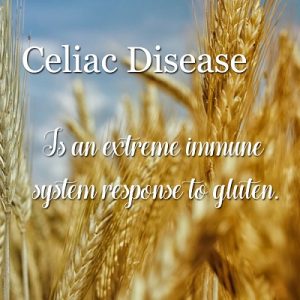 Celiac disease is the result of the immune system reacting abnormally to a protein contained in wheat, oats and other grains, called gluten. When gluten is eaten by susceptible people it triggers an immune response that causes inflammation, and damage to the lining of the small intestine.
Celiac disease is the result of the immune system reacting abnormally to a protein contained in wheat, oats and other grains, called gluten. When gluten is eaten by susceptible people it triggers an immune response that causes inflammation, and damage to the lining of the small intestine.
The overreaction to this protein by the body causes damage to the small finger-like projections found along the wall of the small bowel. When these projections are flattened and inflamed, it prevents the absorption of nutrients from food by the small intestine.
Symptoms of Celiac Disease
Damage to the intestines often causes diarrhea, fatigue, weight loss, bloating nausea, and vomiting.
Most people with celiac disease are never aware that they have it. Researchers believe that as few as 20% of sufferers ever get a correct diagnosis. The damage to the intestines is very slow, and symptoms are often quite varied, so it can be years before a diagnosis is made.
Incremental, long-term intestinal damage can lead to more serious symptoms. It is believed that more than half of the people with this condition have other indications that are expressed beyond the digestive system.
These symptoms include anemia (resulting from iron deficiency), loss of bone density (osteoporosis), itching , blistering skin rash (herpetiformis dermatitis), and damage to dental enamel.
Effects of Celiac Disease in Children
Typical signs of Celiac disease for children under 2 year of age are vomiting, chronic diarrhea, swollen belly, failure to thrive, and poor appetite. Symptoms for older children can include diarrhea, constipation, weight loss, irritability, short stature, and delayed puberty.
Other serious neurological symptoms for children with untreated gluten intolerance can include attention deficit/hyperactivity disorder (ADHD), learning difficulties, headache and lack of muscle coordination.
Complications Relating to Celiac Disease
Over time, the inflammation and damage to the small intestine means the body is unable to absorb enough nutrients to keep the body healthy and may result in malnutrition.
When the body is deprived of adequate calcium and vitamin D it can lead to loss of bone density, or osteoporosis in adults, and softening of the bones in children, termed rickets. As calcium and vitamin D also contribute to the reproductive tissues, infertility and miscarriage can also result.
Sometimes people with celiac disease experience abdominal pain and diarrhea after eating dairy products, even though these products do not contain gluten. It has been found that when the small intestine is damaged it can lead to a lactose intolerance in some people.
This is often reversed when the small bowel heals, however others continue to experience lactose intolerance despite successful management of their celiac disease.
The intestinal gluten intolerance condition called dermatitis herpetiformis is an itchy, blistery rash that usually appears on the elbows, knees, scalp and buttocks. This condition is often associated with changes to the lining of the small intestine that are identical to celiac disease.
However it does not always produce other noticeable digestive symptoms. Doctors recommend a gluten free diet for this condition.
Risk Factors of Celiac Disease
All ages, men, women and children can develop celiac disease. Researchers have found that some gene variations seem to increase the risk of developing celiac disease. Those with a close relative who has celiac disease have a higher risk of developing this condition.
It is believed that additional factors such as gastric infections, and gut bacteria, may are also involved.
Treatment of Celiac Disease
A strict lifelong gluten free diet is currently the only recognized medical treatment. When the cause is removed it allows the linings of the small bowel to heal, helping return proper digestive function.






